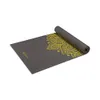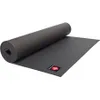Forget weights — this 20-minute barre workout builds core strength and lower-body muscle
20 minutes to work your core and improve your posture

If you're bored of sit-ups and sick of crunches, you can shake up your core-focused workouts with this personal trainer's 20-minute barre-inspired session — and you don't need any equipment to get started.
Low in impact but high in reps, barre classes combine an element of dance training to help boost flexibility and balance and sculpt strong muscles. They do so by performing a handful of exercises to fatigue, followed by a series of stretches to help lengthen the muscles.
You won't need a ballet barre (the wall-mounted handrail ballet dancers practice with) — all you really need is your body weight and a good yoga mat. Then you'll be ready to take on this 20-minute barre workout from personal trainer Emily Hart.
“Barre workouts are known for their ability to tone and lengthen muscles, and this session is no exception,” Hart says. “In addition to sculpting your legs and strengthening your abs, this barre workout includes targeted exercises to give your inner thighs an extra burn!”
Once you're ready to get started, roll out your mat, position a chair next to you for the barre elements, and grab a ball like this $15 ProBody Pilates Exercise Ball from Amazon. If you don't have one nearby, Hart suggests using a small cushion or pillow instead.
Watch Emily Hart’s 20-minute barre workout
You'll spend the first five minutes on a quick, dynamic warm-up, involving squat twists and plié squat side bends. Then once your muscles are all warmed up, you’ll move on to the main section which involves a series of moves designed to sculpt your abs and strengthen your legs.
Exercises include a standing quad burner series using your ball (or soft furnishing) and chair. A plank series featuring blast-offs and ball squeezes and a side incline inner thigh series, followed by tailbone leg lifts. There aren't many moves, but they're an effective way to strengthen your core.
Sign up to get the BEST of Tom's Guide direct to your inbox.
Get instant access to breaking news, the hottest reviews, great deals and helpful tips.
That’s because barre workouts take elements of dance training, yoga, and Pilates to help develop strong muscles. They focus on small, repetitive movements, pulses, and isometric holds. These actions force the muscles to work hard and in a way you might have practiced before, as one of Tom's Guide's editors found when she tried a 20-minute barre workout.
Plus, many of the moves Hart has included in this workout — like a squat or plank — are compound exercises. A compound lift, or compound exercise, is a multi-joint and multi-muscle movement. So essentially, it gives you more bang for your buck as you’ll be working more muscles and joints in a shorter space of time.
What's the difference between barre and Pilates?
If you’re new to barre, you might be wondering what the difference is between barre and Pilates. Both are forms of low-impact exercise and can help you build strength and boost flexibility. But there are a couple of differences.
For starters, the focus of the two classes is slightly different. Barre tends to work muscles to exhaustion with exercises that strengthen the lower body and isolate muscle groups. Meanwhile, Pilates has a strong focus on the core. In fact, every movement starts from the core.
Another distinct difference is the workout equipment. For example, barre is known and loved for its use of a ballet barre (or chair if you’re working out from home), which you wouldn’t tend to use in Pilates. But Pilates is famed for its Pilates rings or reformer machine.
More from Tom’s Guide
- This standing ab workout blasts your core in just 10 minutes
- I did 50 standing oblique crunches every day for a week — here’s what happened to my abs
- Forget sit-ups — you just need a pair of dumbbells and 6 moves to sculpt your abs
Becks is a lifestyle journalist who specializes in writing about wellness and home products, from mattresses to weighted blankets and cooling comforters. She has tested a number of mattresses for Tom's Guide, putting them through their paces to see if they stand up to the brand's claims, and offering recommendations as to the type of sleeper they will (and won't) suit.











